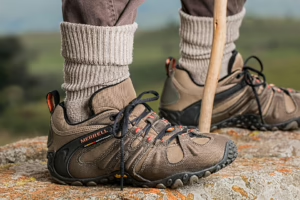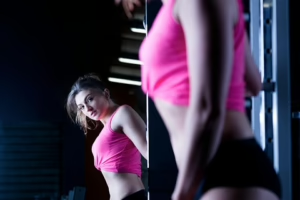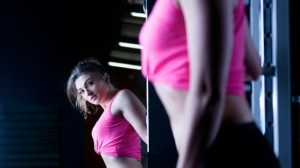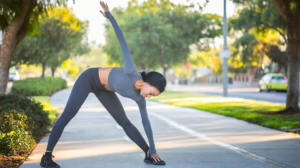Competition Ready: A Step-by-Step Guide to Preparing for Your First Show
Preparing for your first competition can be both exhilarating and daunting. Whether you’re entering a bodybuilding contest, a dance competition, or any other performance-oriented event, the success of your endeavor largely hinges on how well-prepared you are. This guide provides a comprehensive, step-by-step approach to getting ready for your first show.
1. Understanding the Competition Landscape
Types of Competitions
Before jumping into preparation, it’s crucial to understand the type of competition you are participating in. Various factors, including guidelines, judging criteria, and desired outcomes, vary greatly across different events.
1.1 Bodybuilding Competitions
In bodybuilding, competitors are judged based on their muscularity, symmetry, and overall aesthetic appeal. It’s imperative to start planning your workouts and diet well in advance, as optimal conditioning often takes months to achieve.
1.2 Dance Competitions
Dance competitions require not only physical prowess but also performance quality and presentation. You need to master your choreography, enhance your technique, and polish your stage presence.
1.3 Sports Events
From athletics to martial arts, preparation for sports events can involve both technical skill training and physical conditioning. Understanding the specific demands of your sport will guide your training regimen.
2. Setting Clear Goals
Setting specific, measurable, achievable, relevant, and time-bound (SMART) goals can pave the way for structured training and a focused mindset.
2.1 Short-Term Goals
Initial objectives can be small, such as mastering a specific pose in bodybuilding or perfecting a dance move.
2.2 Long-Term Goals
Long-term targets may include achieving a certain weight class, ranking, or simply the experience of competing. Documenting these goals helps maintain motivation.
3. Training Regimen
3.1 Developing Your Training Plan
An effective training plan is specific to your competition type and your physical condition. For a general layout, consider the following components:
3.1.1 Strength Training
For bodybuilding, strength training is essential. Focus on compound movements supplemented by isolation exercises to ensure balanced muscle development.
3.1.2 Skill Training
For dancers or athletes, dedicate time to practicing techniques specific to your discipline. Regular practice should be combined with skill assessment to track improvements.
3.1.3 Flexibility and Mobility
Incorporate flexibility and mobility exercises into your routine to improve performance and reduce injury risk.
3.2 Timeline and Periodization
Design your training regimen over a timeline that culminates in your contest date. This may involve periodization—modifying intensity and volume over different training phases.
4. Dietary Preparation
4.1 Understanding Nutrition
Optimal nutrition plays a pivotal role in competition readiness. Depending on the type of event, your caloric intake, macronutrient ratios, and timing can vary.
4.2 Creating a Meal Plan
Work with a nutritionist to develop a personalized meal plan. Tracking your meals and adjusting based on energy levels, weight loss, or muscle gain is essential.
4.3 Hydration
Maintaining proper hydration levels is crucial. As show dates approach, adjust water intake to manipulate weight if necessary while being cautious not to compromise performance.
5. Mindset and Mental Preparation
5.1 Building Confidence
Building self-confidence involves mental strategies. Visualization, affirmation techniques, and practicing poses or routines go a long way in preparing mentally.
5.2 Coping with Anxiety
Performance anxiety is common. Techniques such as deep breathing, progressive muscle relaxation, and mindfulness can help alleviate nervousness.
5.3 Team Support
Build a support system of friends, family, or fellow competitors. Sharing your experiences and feelings can alleviate pressure and provide encouragement.
6. Poser and Routine Development
6.1 Posing for Bodybuilding
Mastering your posing is critical in bodybuilding. Spend ample time in front of a mirror to practice transitions and angles that highlight your strengths.
6.2 Routine Creation for Dancers
For dancers, a well-structured routine should offer a blend of technical ability and artistic expression. Seek feedback from instructors and peers to refine it.
7. Essential Gear and Costumes
7.1 Wearing the Right Attire
The right attire can significantly influence presentation. Discuss costume design with experienced competitors or coaches.
7.2 Accessories and Footwear
Consider practical footwear for performance and accessories that fit your theme. Ensure they do not distract from your performance.
7.3 Packing List
Compile a list of all necessities, ensuring nothing is forgotten on the competition day. Include backup options if possible.
8. Final Preparations
8.1 Tapering Your Training
In the weeks leading up to the competition, taper your training regimen to ensure you are fully recovered and at peak performance.
8.2 Rehearsals
Conduct any final rehearsals to gauge readiness. This includes dry runs for presentations, especially for dancers.
8.3 Checking Logistics
Double-check all competition details, such as venue, schedule, and what to bring. Confirm travel arrangements and accommodation.
9. Competition Day
9.1 Nutrition and Hydration
On competition day, stick to familiar foods that provide energy without causing discomfort. Hydrate, but be cautious about overhydration.
9.2 Relaxation Techniques
Utilize techniques to manage stress. Arrive early to familiarize yourself with the venue, and allow yourself time to focus.
9.3 The Importance of Warm-Up
Engage in a proper warm-up routine to prepare both mentally and physically. This aids muscle activation and minimizes injury risk.
10. Post-Competition Reflection
10.1 Receiving Feedback
Post-competition, seek constructive feedback from judges or coaches to identify areas for improvement.
10.2 Celebrating Achievements
Regardless of the outcome, take time to celebrate your hard work and commitment. Reflect on both successes and challenges.
10.3 Planning for the Future
Consider setting new goals based on your experience. Whether you wish to compete again or aim for personal development, use the experience to fuel your next steps.
Conclusion
Preparing for a competition involves a multifaceted approach that encompasses physical, emotional, and logistical considerations. By setting clear goals, developing a structured training regimen, focusing on nutrition, and preparing mentally, you can position yourself for success in your first show. The journey may be challenging, but the rewards—ranging from personal growth to potential accolades—are well worth the effort.
References
- Nelson, J. (2022). Effective Nutrition Strategies for Athletes. Journal of Sports Science & Medicine.
- Harris, L. (2021). The Psychology of Performing: Tips for Reducing Competition Anxiety. International Journal of Performance Psychology.
- Thompson, R. (2023). Strength Training Principles for Bodybuilding. Strength Training Journal.
- Cook, S. (2022). Dancer’s Nutrition: Fueling Performance. Dance Journal.
- Briscoe, T. (2023). Periodization and Its Impact on Performance. Journal of Strength and Conditioning Research.
Prepare yourself for the challenges ahead, embrace the process, and enjoy your journey to becoming competition ready!


























Add Comment